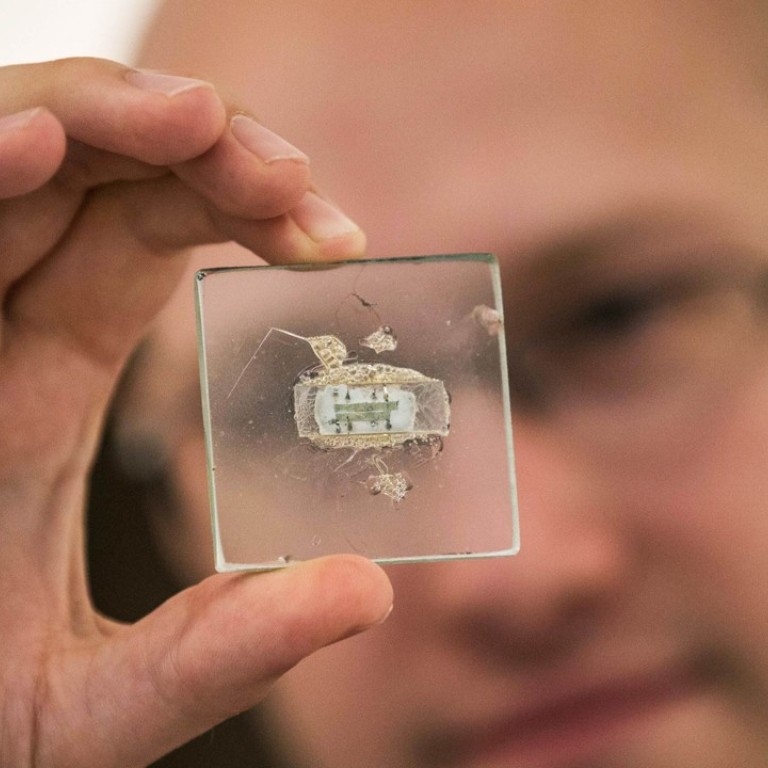
Uncertainty has become the new normal as the era of Moore’s law draws to a close
‘When a product’s performance is improved beyond a singular dimension, as historically dictated by Moore’s law, roles and responsibilities blur’
Last Tuesday, the world’s biggest chip maker, Intel, whose brand is synonymous with personal computers and laptops, announced that its former chief executive Paul Otelini had passed away in his sleep at the age of 66. As the fifth chief executive of the company, Otelini presided over the period of largest growth in the company, raising the annual revenue from US$34 billion to US$53 billion in 2012. In fact, more money was made under his eight year reign than in the previous 37 years of Intel’s existence. No other company can fire out a better and faster microprocessor, the engine that spurs into motion when you turn your computer on.
But the dominance of Intel is as much about its inventiveness as its ability to predict product advancement. No other industry manages to engineer miracles with such absolute transparency. We tend to perceive innovation as something uncertain, and progress made by scientists can be slow at times. Yet, that’s not how Intel behaves. It’s clockwork; it’s anything but ambiguous.
In 1965, Intel co-founder Gordon Moore made a bold prediction about the exponential growth of computing power. From the vacuum tube to the discrete transistor to the integrated circuit, the miniaturisation of computer hardware had progressed apace. Extrapolating the trend, Moore asserted that the number of microchip transistors etched into a fixed area of a computer microprocessor would double every two years. Since transistor density was correlated with computing power, the latter would also double every two years. As improbable as it might have seemed, Intel has since delivered on this promise, immortalising “Moore’s law.”

It’s difficult for anyone to fathom the effects of exponential growth. Take an imaginary letter-sized piece of paper and fold it in half. Then fold it a second time and then a third. The thickness of the stack doubles every time. If you manage to fold the same piece of paper 42 times, it will be so thick that it stretches all the way to the moon. That’s exponential growth. Exponential growth explains why a single iPhone today possesses more computing power than the entire spacecraft for the Apollo moon mission back in 1969. Without Moore’s law, there would be no Google, no Facebook, no Uber, no Airbnb. Silicon Valley would just be like any other valley.
When I was at a conference in Israel, a former Intel executive told me that Gordon Moore could get “rather philosophical” about the future of Moore’s law. When asked by his staff when this amazing trajectory might end, the co-founder responded, “Nothing grows exponentially forever.” And indeed, Intel was no exception.
In 2016, Intel disclosed in a regulatory filing that it was slowing the pace of launching new chips. Its latest transistor is down to only about 100 atoms wide. The fewer atoms composing a transistor, the harder it is to manipulate. Following this trend, by early 2020, transistors should have just 10 atoms. At that scale, electronic properties would be disturbed by quantum physics, making any devices hopelessly unreliable. Samsung, Intel, and Microsoft have already shelled out US$37 billion just to keep the magic going, but soon enough, engineers and scientists will be hitting the fundamental limit of physics.

The imminent demise of Moore’s law, however, doesn’t mean a total pause in new product hype. It doesn’t mean that virtual reality headsets, the internet of things, and artificial intelligence are all smoke screens. It won’t stop machines from taking away more white-collar jobs – although it’s a nice thought. What it does mean, however, is that technological drivers will switch away from mere computing horsepower and focus their attention elsewhere, such as on more clever software design. Despite 50 years of staggeringly increasing computing brawn, commensurate development in software has taken a back seat. Charles Simonyi, a computer scientist who oversaw the development of Microsoft Word and Excel, said in 2013 that software had failed to leverage the advances that have occurred in hardware. The temptation to rely on hardware’s brute force to mask inelegant software design had been too strong. A prime example is in the area of artificial intelligence.
Until very recently, computers required programmers to write instructions. Computers generally don’t learn autonomously; they follow rules. However, Google has demonstrated that machines can learn on their own, becoming better and smarter without human supervision. When its programme AlphaGo trounced Chinese Go grandmaster Ke Jie earlier in May, Ke took note of his opponent’s unique and sometimes transcendent style of play: “AlphaGo is improving too fast. Last year, it was still quite humanlike when it played. This year, it became like a god of Go.”
The all-powerful AlphaGo was made possible because of “deep learning,” a software design approach that mimics the working of neurons in the human brain. Google’s software engineers have somehow figured out how to “reward” a programme in the form of higher scores when the algorithm achieves the desired outcome. AlphaGo then writes its own instructions randomly, generating many instructions on a trial and error basis and replacing lower-scoring strategies with those higher-scoring ones. That’s how an algorithm teaches itself to become better, without constant human supervision.
When a product’s performance is improved beyond a singular dimension, as historically dictated by Moore’s law, roles and responsibilities blur. Software firms are enticed to dabble in hardware, and hardware makers create, in turn, niche products. Facebook and Amazon are already designing their own data centres, Microsoft has started making its own chips, and Intel is now jumping into virtual reality technologies. Unlike in the innocent era of desktop computers, we will no longer have the dominant architecture of Windows and Intel. Gone will be the existing industry order. And so, in the age of cloud computing, artificial intelligence, and the internet of things, choices and competition will proliferate.
For non-IT companies, purchasing will become more complicated. Managers will no longer be able to look for the industry’s best practice and buy off-the-shelf-solutions outright. More investigation and negotiation will be commonplace. The passing of Paul Otelini will always remind us of a simple, innocent world that we’ll dearly miss.
Howard Yu is professor of strategy and innovation at IMD

